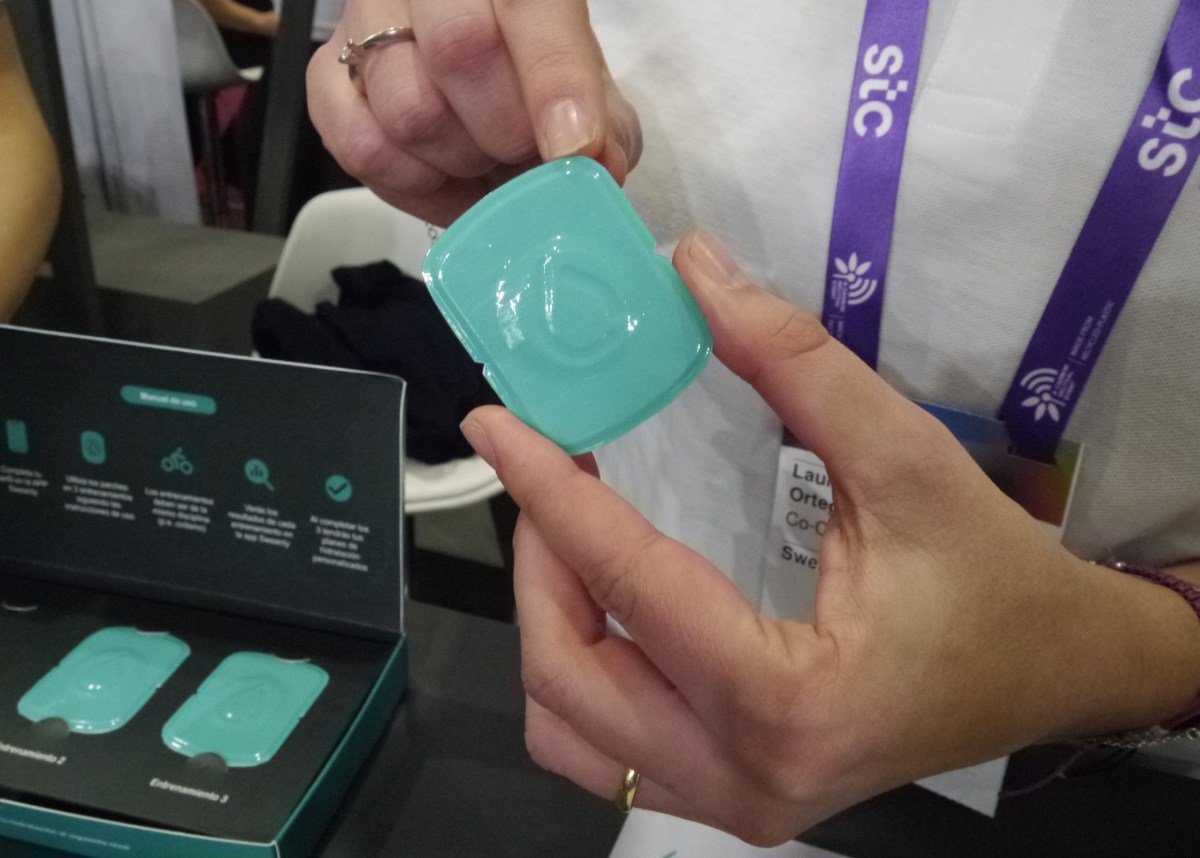With the increasing popularity of health and fitness tracking, wearables are taking on a diverse range of shapes, sizes, and disguises. At the 4YFN event at the MWC tradeshow, a new wearable caught our attention: a stick-on patch designed to track an athlete’s sweat in order to monitor salt loss and help customize their rehydration strategy. Developed by the Spanish startup Sweanty, these single-use wearables may be small but they pack a punch.
“We do personalized hydration plans for athletes – and these plans are based on analysis of their sweat,” revealed co-CEO and founder Laura Ortrega Tañá. This patented system is specifically designed to ensure that athletes replenish their electrolyte levels with the correct amount of isotonic drinks after each training session. By analyzing the patch wearers’ unique “sweatprofile,” the companion app provides tailored hydration plans for peak performance.”
This innovative technology does come with a cost, as it requires athletes to use a new patch for each training session or at key points during their training season. However, professional athletes who constantly push their limits understand the value of investing in their own performance.
According to Ortrega Tañá, proper hydration can greatly enhance an athlete’s performance by maintaining energy levels, improving endurance, and reducing the risk of cramps. It also plays a crucial role in regulating body temperature.
Although not yet available for purchase, Sweanty plans to launch their wearables in Spain by the end of April. The pricing is yet to be confirmed, but Ortrega Tañá estimates it will be around €120 for a box of three patches accompanied by three months of access to the subscription tracking service.
The version of the wearable showcased at MWC is designed to be worn on the skin at the base of the back, making it ideal for trail runners. However, Sweanty believes that the patch could benefit a variety of endurance and performance sports. The only exception being for sports where the user is fully immersed in water, such as swimming. In these cases, traditional methods like weighing themselves before and after a session will have to suffice for tracking salt loss.
The Sweanty team is also working on a version of the patch that will allow for the retention of electronic components after each use, minimizing waste and making it more cost-effective for the user.
The sweat analysis technology was originally developed and patented during Ortrega Tañá’s PhD. One of the key innovations of this device is that it utilizes a paper-based method for measuring salt levels. As Ortrega Tañá explains, “We are using a battery with two electrodes on a paper inside. When the paper is dry, it’s not functioning. But when it absorbs sweat, it generates power proportional to the amount of salts present.”
While the primary target market for this technology is athletes, Ortrega Tañá believes it has broader applications as well. It could be particularly useful for health-conscious individuals who lead active lifestyles and want to monitor their hydration levels. Additionally, in occupations where working in hot conditions poses a health risk, such as for construction workers or firefighters, this technology could be a valuable asset. All it requires, according to Ortrega Tañá, is “that they sweat.”
She also envisions a potential use-case for the wearable in alerting caregivers of the risk of dehydration in seniors who may not be drinking enough water. However, in such scenarios, the wearable would need to be redesigned to actively stimulate the sweat reflex in order to accurately monitor salt loss.









Wow, fantastic weblog layout! How lengthy have you been blogging for?
you made running a blog look easy. The full glance of
your site is excellent, as neatly as the content material! You can see similar: sklep internetowy and here
najlepszy sklep